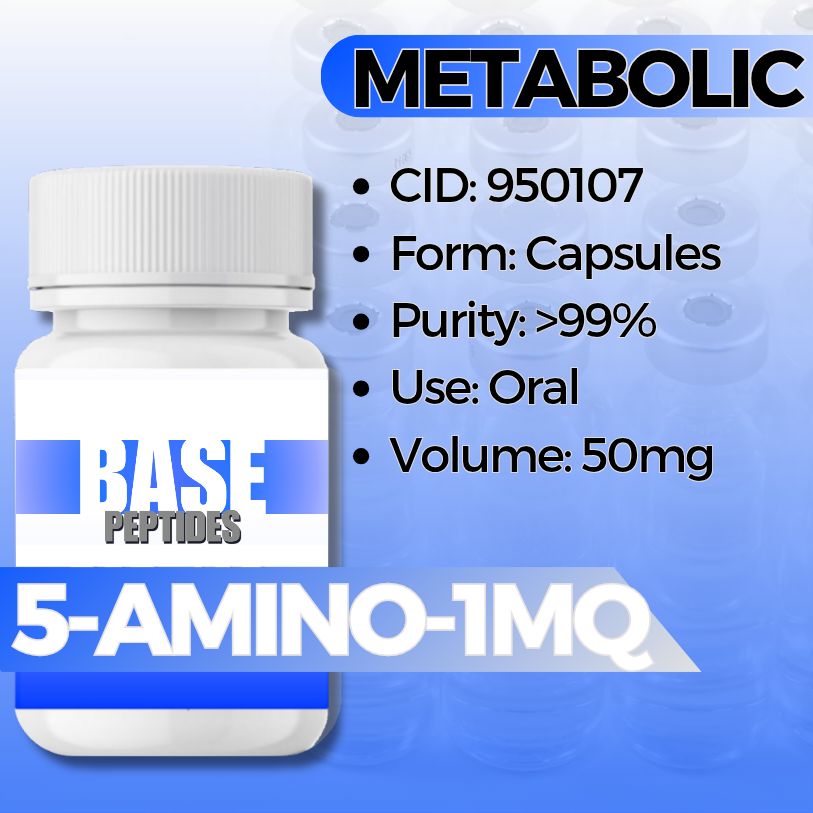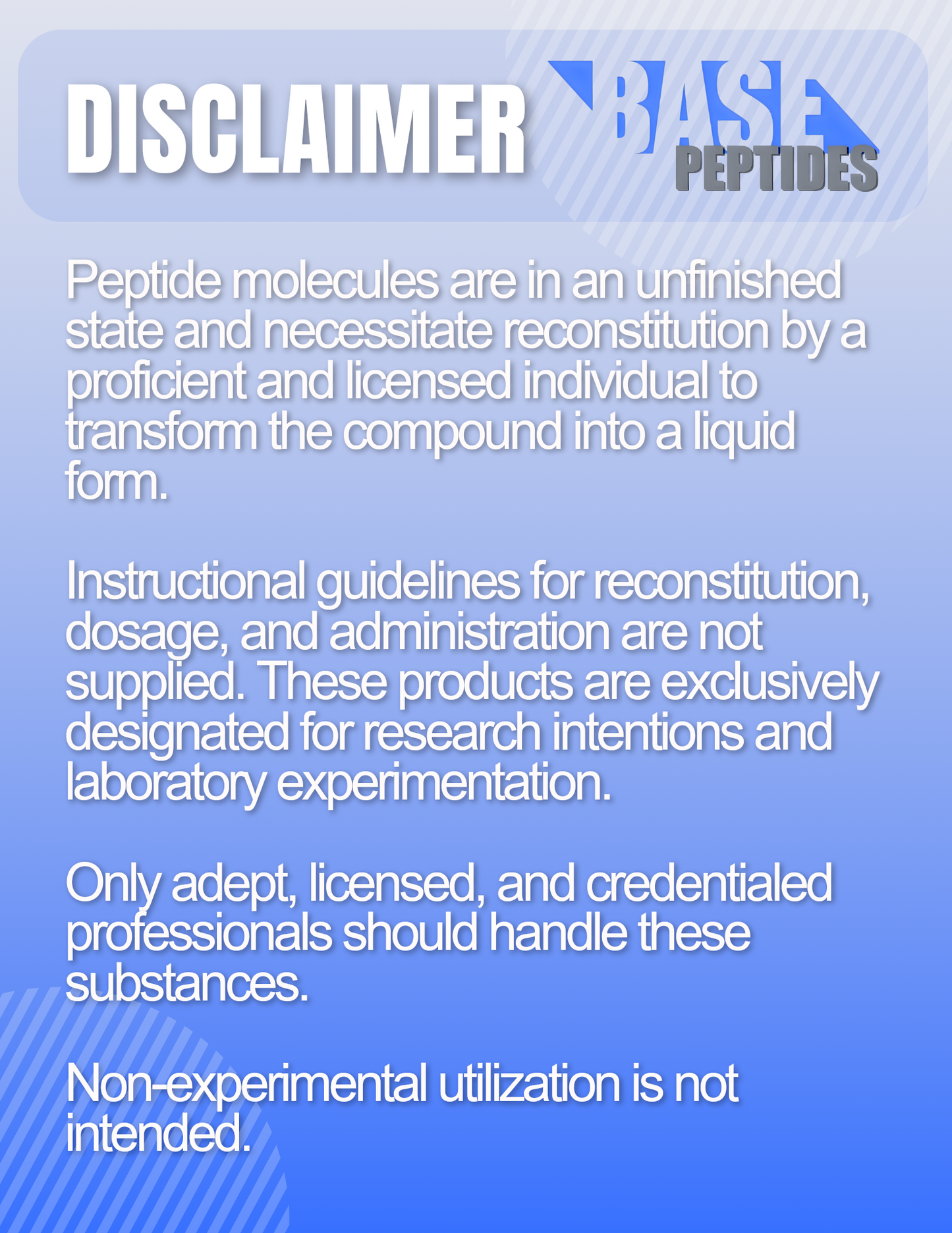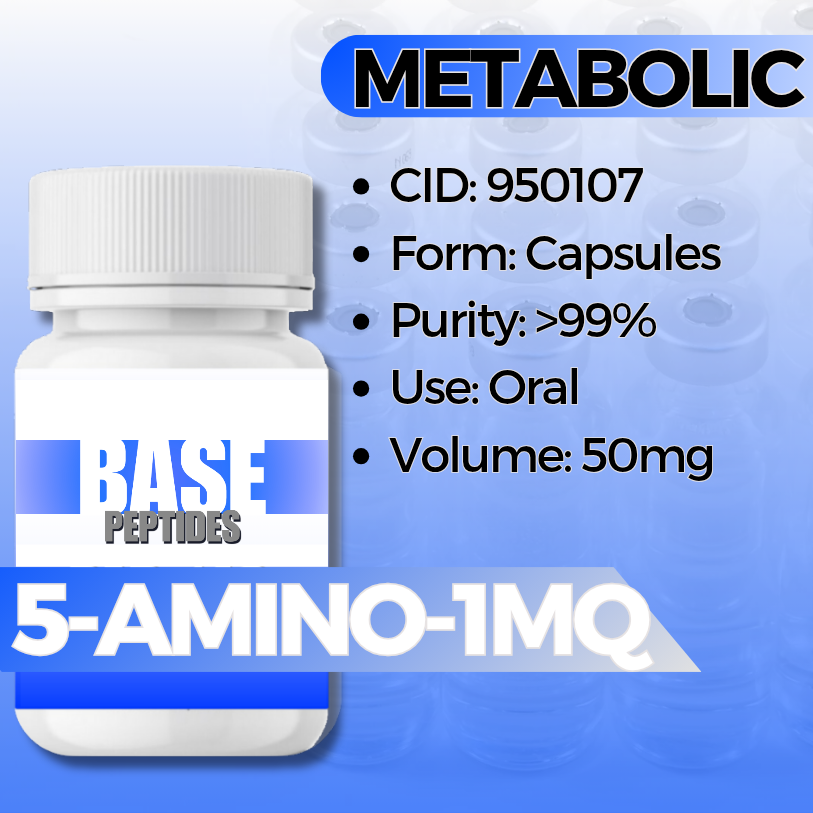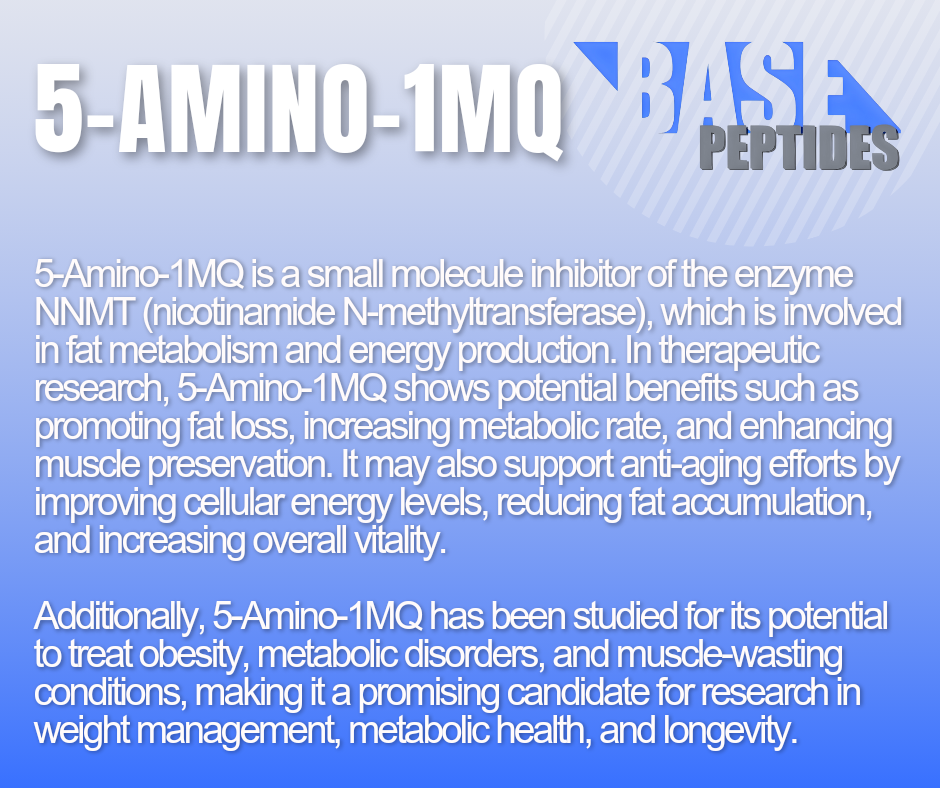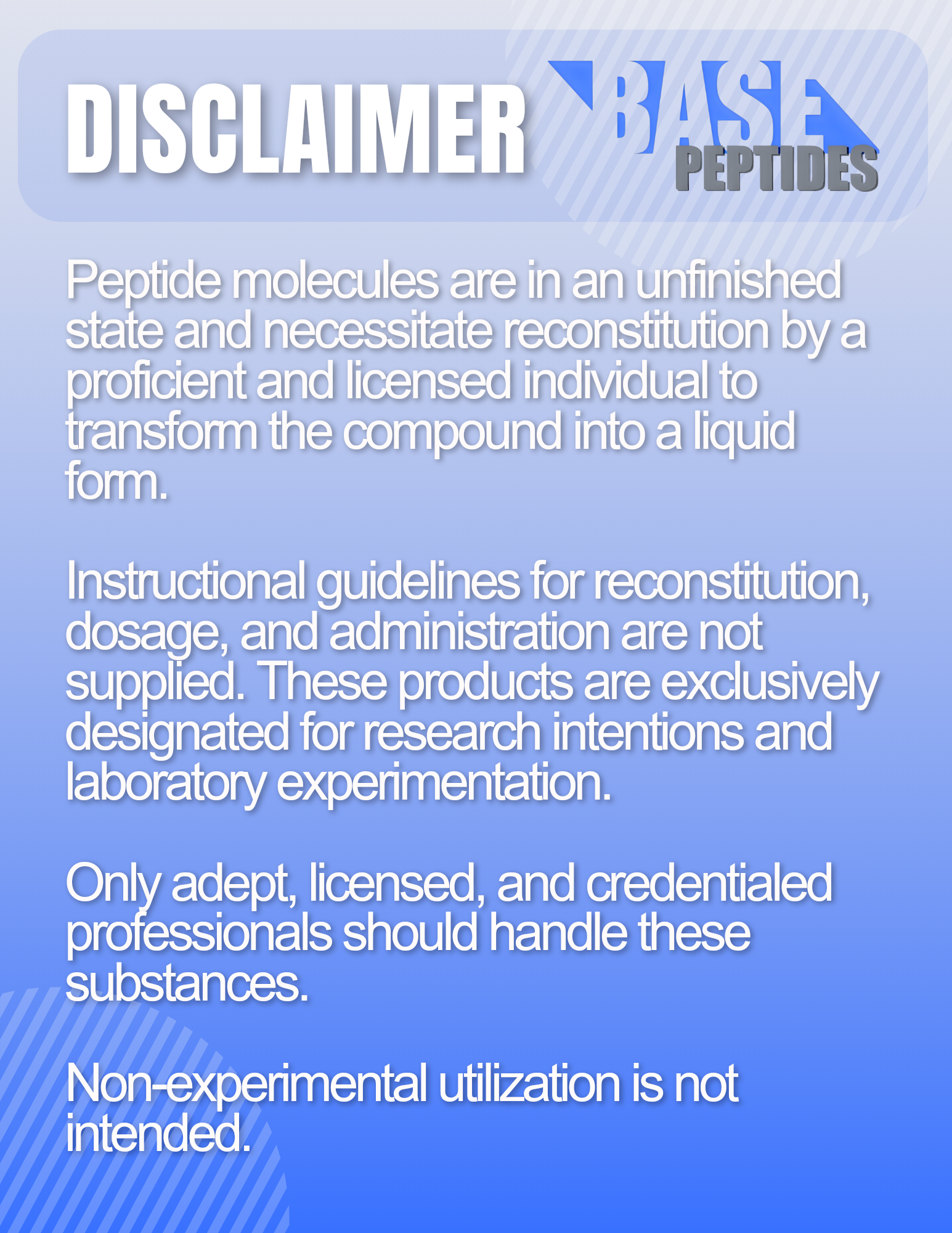5-Amino-1MQ
5-Amino-1MQ
Base Peptides are intended for licensed medical professionals and experienced researchers. Reconstitution required. Dosing and use instructions are not provided.
Couldn't load pickup availability
5-Amino-1-MQ — NNMT Inhibitor (Metabolic Modulator)
5-Amino-1-MQ is a small-molecule nicotinamide N-methyltransferase (NNMT) inhibitor that has attracted attention in research on energy metabolism, fat-cell activity, and NAD⁺ homeostasis. By reducing NNMT activity, it can help preserve cellular NAD⁺ levels and influence how adipocytes store and burn energy.
- Chemical name: 5-Amino-1-methylquinolinium iodide
- CAS No.: 1600960-84-8
- PubChem CID: 135423191
- Formula: C10H11IN2 • Molecular weight: ~286 g/mol
- Acts as a selective NNMT inhibitor, blocking the enzyme that converts nicotinamide to 1-methylnicotinamide (1-MNA).
- This preserves cellular NAD⁺ pools—vital for mitochondrial energy and sirtuin activity.
- In adipose-tissue research, inhibition of NNMT has been linked to increased energy expenditure and reduced fat storage.
- To explore how NNMT influences obesity, metabolic syndrome, and insulin sensitivity.
- To study the relationship between NAD⁺ metabolism and mitochondrial function.
- To investigate potential synergy with NAD⁺ precursors (NR/NMN) and sirtuin-activating compounds.
Key Study Findings
Adipose Energy Metabolism Models
- What was tested: Mouse adipocytes ± 5-Amino-1-MQ; endpoints: NNMT activity, NAD⁺ levels, O₂ consumption, energy expenditure. (pubmed 31229444)
- What changed: ↓ NNMT activity, ↑ NAD⁺, ↑ energy expenditure, ↓ fat-mass gain on high-fat diet.
- Why it matters: Demonstrates NNMT inhibition as a viable target for metabolic research and fat-cell energy control.
NAD⁺ Preservation and Sirtuin Activity
- What was tested: Cell culture studies measuring NAD⁺ and SIRT1/SIRT3 activity after NNMT inhibition. (pubmed 33077250)
- What changed: Enhanced sirtuin activation and improved mitochondrial respiration profiles.
- Why it matters: Links NNMT inhibition to NAD⁺-dependent longevity pathways and cellular repair.
Potential Research Applications
Metabolic Health & Obesity
- Energy expenditure and fat-mass assays in diet-induced obesity models.
- Insulin sensitivity and glucose tolerance testing.
Cellular Energy & Longevity
- NAD⁺ pool maintenance and sirtuin activation studies.
- Mitochondrial biogenesis and oxidative stress markers.
Comparative Pharmacology
- NNMT inhibitors vs NAD⁺ precursors (NR, NMN) vs SIRT activators (Resveratrol, Pterostilbene).
Synergistic / Comparator Compounds
NMN / NR (NAD⁺ Precursors)
- Why pair: NNMT inhibition slows NAD⁺ loss while precursors increase NAD⁺ supply — potential additive effect on energy metabolism.
MOTS-c or SS-31
- Why pair: Combine mitochondrial-protective peptides with NNMT inhibition for enhanced bioenergetic research.
Resveratrol / Sirtuin Activators
- Why compare: Direct sirtuin activation vs indirect NAD⁺ preservation approaches.
Known Concerns (Context)
- Tool compound status: Limited human data; all evidence preclinical or in vitro.
- Potency: Micromolar range activity — use careful dose titration in cell systems.
- General: For laboratory research use only; not for human consumption or therapeutic use.
Specifications & Handling
- Form: Small-molecule solid compound (lot-coded)
- Purity: ≥ 98 % (HPLC/MS verified)
- Storage: Cool, dry, dark conditions (≤ 25 °C)
- In solution: Soluble in DMSO and ethanol — prepare fresh aliquots; avoid repeated freeze–thaw.
- Labeling: Tamper-evident; “research use only” marking required.
Regulatory & Use Notice
Sold for laboratory research use only. Not for human consumption, medical, or veterinary use. No human-use instructions are provided. Buyer is responsible for safe handling and regulatory compliance.
5-Amino-1-MQ Research Compound | NNMT Inhibitor | NAD⁺ Metabolism & Metabolic Health Studies
